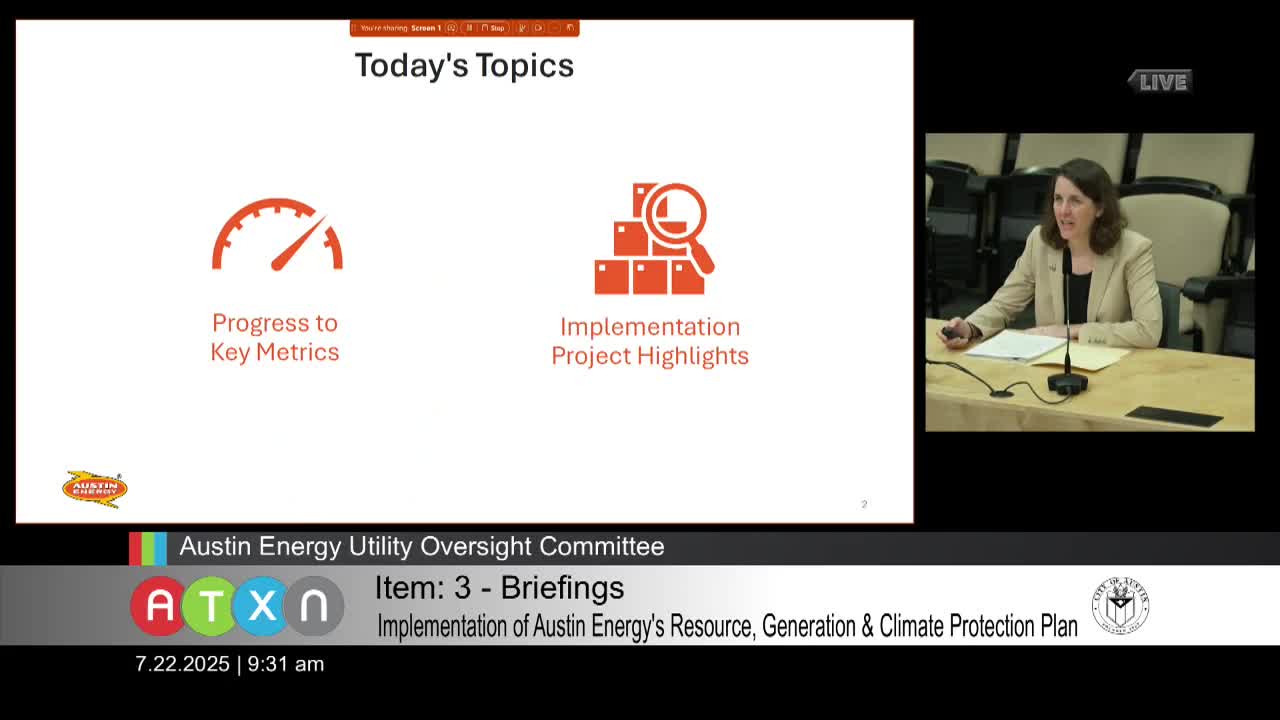Austin's 2035 Carbon Free Plan Highlights Progress and Future Energy Goals
July 22, 2025 | Austin, Travis County, Texas
Thanks to Scribe from Workplace AI , all articles about Texas are free for you to enjoy throughout 2025!

This article was created by AI using a video recording of the meeting. It summarizes the key points discussed, but for full details and context, please refer to the video of the full meeting. Link to Full Meeting
The committee reported that Austin is currently operating at 65% carbon-free energy, a decline from previous years due to factors such as transmission congestion, curtailment of resources, and increased energy demand. These challenges have diluted the effectiveness of carbon-free resources, prompting the committee to explore various strategies to improve this percentage. Proposed solutions include increasing local solar and battery storage, enhancing import capacity, and leveraging new technologies.
Significant progress has been made in energy efficiency initiatives, with the city achieving 86% of its installed capacity goal since the program's inception in 2007. However, the committee acknowledged that maintaining this momentum will require an average of 40 megawatts per year, a target that may be difficult to meet given current projections.
Local solar initiatives have also seen success, with a record 16 megawatts of installations in 2024. Yet, the committee emphasized the need for continued growth to meet the ultimate goal of 405 megawatts by 2035, especially in light of upcoming changes to federal tax incentives that could impact residential solar adoption.
The meeting also addressed environmental impact metrics, revealing a significant decrease in carbon dioxide emissions, which fell to less than 2.5 million metric tons in 2024. The committee noted that carbon intensity, a measure of emissions per energy unit generated, remains below established guardrails, indicating progress in reducing emissions even as energy generation increases.
Updates on key initiatives included the adoption of the 2024 International Energy Conservation Code, positioning Austin as a leader in energy-efficient building practices. Additionally, a recent study by DNV Energy Insights provided valuable insights into the market potential for energy efficiency and local solar, although it highlighted the need for increased funding to meet future goals.
As the committee continues to navigate the complexities of achieving its carbon-free objectives, the discussions underscored the importance of innovative solutions and community engagement in driving Austin's energy future. The next steps will involve further assessments of the challenges ahead and the implementation of strategies to enhance the city's energy sustainability efforts.
Converted from Austin - Austin Energy Utility Oversight Committee - Jul 22, 2025 meeting on July 22, 2025
Link to Full Meeting
Comments
View full meeting
This article is based on a recent meeting—watch the full video and explore the complete transcript for deeper insights into the discussion.
View full meeting
